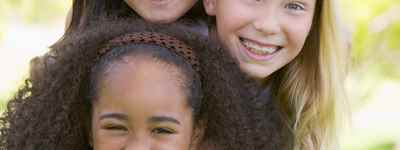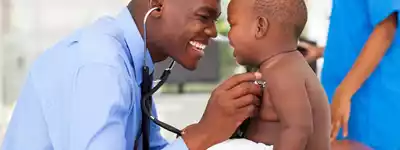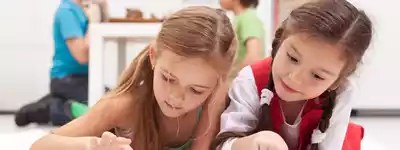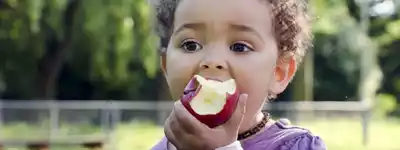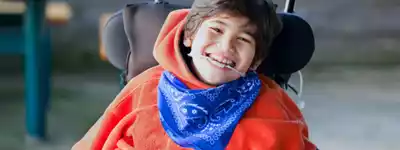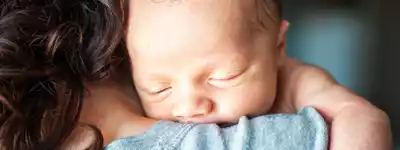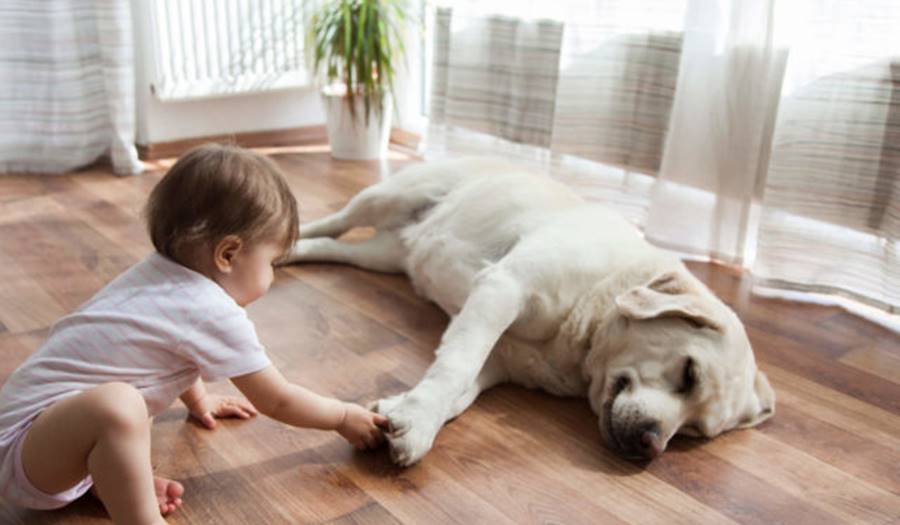
Introducing a baby, dog or cat to your family
6/7/2021
Pets bring so much joy to our lives. The benefits of adding a pet to your family can be seen no matter your child’s age. A pet can help teach your child compassion, responsibility, how to play with someone else, and social skills. It builds confidence, provides entertainment, and can decrease feelings of loneliness. It has also been shown to decrease blood pressure and cholesterol! Sometimes a pet is your first baby and sometimes we add pets after we have had children. We are going to discuss adding a pet or adding a baby to your family and how to ease that transition!

DOGS
ADDING A BABY
Adding a baby to the family is an exciting time. But how will your dog react? We can never know how they will adjust but we can help ease the transition by preparing them for the baby. The preparation you do before the baby arrives will make the changes to their life and your
life that much easier. By the time your baby comes home, the baby should be the ONLY new thing in your dog’s life!
Before Baby Comes Home
Before the baby comes home, we recommend socializing your dog with children, preparing them for a baby in their house, developing a new routine, working on new commands, moving your dog out of your bed or bedroom, and making a post baby plan.
Socializing
Your dog may already be socialized with children but if they are not, make sure to spend time doing this before the baby is born. Children are often impulsive and move quickly, both of which can be scary for a dog. Try to keep interactions with children positive because a few bad interactions can cause a negative association with children and make the dog more afraid in the future.
When you are socializing your dog, do not include it with other activities. Make it THE activity and your dog must have your undivided attention. Do not immediately approach children. Start off watching children from a distance. During this time, you can offer your dog treats to help build a positive association. Once your dog seems ready to meet a child, make sure the meeting takes place in a neutral space. Allow your dog to decide to approach a child. Often being off leash or playing a game of fetch is more successful than a petting session. You want to keep the interaction short and positive with frequent praise and treats (this is only if your dog has NO history of food guarding). You also want to make sure your dog has relaxed body language during the interaction (body language will be discussed next week).
Never bring your dog to a big party, picnic, or busy playground. These busy spaces are often chaotic, and the dog can be easily overwhelmed and stressed. Often children will want to come pet your dog and may rush up to the dog. This can result in a dog feeling cornered and over handled. Also, if he gets overwhelmed and you need to pull back on the leash, this hard pulling can create a negative association with children. The best way to build socialization with children is to provide space or distance, time for your dog to feel comfortable, and positive experiences.
Preparing for Baby
Babies may be small, but they are NOT quiet! This can be surprising to your dog who is used to living with adults or even having a quiet house to themselves all day! Preparing your dog for baby noises can make them less of a surprise when they are coming from a real baby. There are baby television stations and recording of baby noises that you can use to help acclimate your dog. Start with short session with the volume set low. If your dog shows signs of stress, turn the volume lower and shorten the duration of the session. If your dog is relaxed, offer treats and over time turn up the volume and increase the duration of the session. The goal is for the dog to be neutral, showing no reaction, to the noises.
Babies also come with lots of furniture, equipment, and toys. Many of these items are noisy, large, or move. Make sure to have these objects, such as a bouncy seat or swing, set out in your house before the baby arrives. Move them around, turn them on, and let any noises or music play. Let your dog explore these items and become accustomed to them so they are not interested by the time the baby arrives. Also, if your dog will be walking with you and you will have a stroller, it is best to practice with no baby in the stroller in case they become afraid of the stroller or wheels! Remember, our goal is to have them neutral towards these objects and ignore these objects.
If your dog’s schedule is going to change, make sure to do it in advance of the baby’s arrival. Many dogs get very set in their routine! Our dog knows exactly when it is 5pm, not 4:58 and not 5:03, and will let us know that it is time for his dinner by barking at us then hitting the closet door where his food is kept. Many dogs are similar and find comfort in a routine. If you normally walk your dog in the morning but your partner will be walking the dog, make that switch a month or so in advance of the baby arriving. If they will have a new dog walker or will be attending dog daycare, make sure they have exposure before the baby comes.
Commands
Preparing your dog for their human sibling should include reviewing commands and possibly adding some new commands. Your dog should be able to sit and stay on command. Other helpful commands include off/on, drop, leave it, or away/go to.
Away or the “go to” command can be a very useful command. This command tells your dog to go to their safe space, either an open crate, a mat or their bed. This will be important as your child is growing and starts moving. This should be a place where your dog can relax and have a safe, child free space. To get your dog used to staying in or on their safe spot, practice with them spending a short amount of time in this safe space and increase the amount of time each session.
The leave it or drop command can be helpful to get a dog to let go of an object. This will help prevent guarding or a tugging fight if your dog picks up or takes your child’s toy. This command is helpful but preventing toy theft is easier. Do not give your dog stuff toys or ones that appear similar to children’s toys.
If you have not crate trained this can be a great time to start that training if you haven’t already. A crate should be a happy and safe space so make sure crate training is a positive experience. A crate should be as safe spot for your dog ONLY. A child should never be allowed in the crate.
If your dog has not been left alone often, working on alone time can be very helpful for the busy days with a newborn where they might not get as much attention. If they haven’t had alone time, slowly build up the amount of alone time they can tolerate.
It is also important, if you have stairs in your home, to teach the dog to go up or down stairs BEFORE or AFTER you to prevent you tripping over the dog while holding the baby, the dog knocking into you while holding the baby, or the dog knocking over a toddler or child while they are using the stairs.
Sleeping Spaces
Dogs should never be around baby or small children unsupervised. When you are sleeping, they are unsupervised. Therefore, if your dog sleeps on your bed or in your room and you will have your baby sleeping in your room, you need to develop a new sleeping plan and habit before the baby comes. Solutions include having your dog sleep outside your room or behind a gate that prevents them from approaching the baby. You may also have your dog sleep in a crate inside or outside your room. This can take time for your dog to adjust so plan accordingly before the baby comes.
Post baby plan
Before the baby is born, create a plan for who will take care of your dog while you are in the hospital and your first few days at home. You may have your dog stay home with a dog sitter or family. Your dog may stay at a doggy daycare or with friends or family while you are in the hospital. You may have your dog come home immediately or you may take a few days to settle in with your newborn before the dog returns to your home. Also make a plan for your dog to have prearranged walks or outlets to get exercise for your first few days after your return home with the baby. You will be busy with a newborn, so having a plan set ahead of time will be one less thing to have to worry about!
When to seek help
If your dog has significant separation anxiety, a history of aggression, is scared of strangers or generally fearful, is reactive or shows resource guarding, it is important to consult a certified dog trainer for advice before your baby arrives. Also, having two dogs can have additional issues. Sometimes a new baby will cause tension between multiple dogs. They may try to resource guard the baby or baby items. They also may have altercations in front of or near the baby that can cause unintentional physical harm. The risk of a dog acting in a predatory manner towards newborns or small children increases with more than one dog.

Brining baby home
Bringing your baby home is an exciting moment for parents and family. But we actually want to make the moment they dogs meets the baby NOT exciting. First, you do not need to bring an object home from the hospital to get your dog use to the baby’s smell. There are so many odors that the dog can detect on objects that this practice is not helpful.
Here are some tips for a successful first meeting between your dog and human sibling:
• Make sure your dog has been walked and exercised before the meeting
• Do not have your dog meet the baby in a cramped hallway, in a doorway, or in a small space
• If possible, you and your partner should greet the dog first without the baby so the dog, who hasn’t seen you in a few days, can get their excitement out before introducing the baby to the situation
• Once you have greeted your dog, make sure one person is in charge of the baby and one in charge of the dog
• You can have the baby in a car seat, hold the baby or have the baby in the crib
• If you are holding the baby, do not let their legs dangle
• Have your dog on a loose leash or behind a gate to start
• If your child is in a car seat when they meet, allow the dog to sniff the side or bottom, DO NOT ALLOW THE DOG TO STICK THEIR HEAD IN THE CAR SEAT TO SNIFF THE BABY
• Do not force the interaction, if your dog maintains a distance but is relaxed, allow them this space.
• If they are relaxed but maintaining distance, you can slowly offer treats
• If they are not relaxed or seemed stressed, remove them to a safe space
• If the dog approaches you and the baby, make sure you supervise and HAVE CONTROL over the encounter. This means your dog never is between you and the baby
• Do NOT pull at their collar or as this may create a negative association with the baby
• At the end of the interaction, make sure to give your dog a big treat such as a stuffed bone or Kong-like toy
Make sure in those first few days you take a few minutes to spend with your dog every day. Give your dog attention but try to avoid interactions when you are holding the baby. Your dog wants to see you and they may come close to the baby before they are truly ready. If you are holding or feeding the baby, cue your dog to their safe space and offer lots of treats and praise. When you are not holding your baby, make your interactions positive such as cuddling with your dog, playing fetch, or taking a short walk.
Preparing your dog for your baby does not always mean your dog will react well to a newborn. There will always be an adjustment period. Your dog may show signs of being stressed (next week we will discuss these signs). Your dog may have urine or stool accidents. They may try behaviors to get your attention or may try to demand your attention by jumping or barking. They may also become destructive, may hurt themselves, or may refuse to eat. They may have persistent crying, especially when the baby is crying, or whining. Some dogs are frightened of the baby. They may hide unless the baby is in the nursery or a closed off room.
Your dog may also have an increase in other unwanted behaviors. Some dogs will exhibit resource guarding. Normally this can be over bones or toys but sometimes the dog will become possessive over the baby and parents to people or other animals in the house. This is more likely if they already have resource guarding, like to steal objects, or are protective over specific locations in the house.
Separation anxiety can get worse after a baby joins the family. Some dogs will have a harder time separating from you but can also have a hard time separating from the baby. Sometimes a new baby entering the family will result in an increase of aggressive behaviors such as snapping, snarling, growling or biting or nipping. This is often due to stress. If your dog has any of these issues after a baby joins your family, it is important to maintain distance between your baby and dog and consult a certified dog trainer for help.
Baby and Children
Babies are scary for dogs. Dogs are not humans. They do not understand or expect the baby noises or movements. When babies start moving their movements are unpredictable and sudden which can startle a dog. They also make a lot of noises and screeches that can sound like prey. Because dogs are wired to be curious and suspicious, this can be scary for many dogs.
Dogs also do not anticipate the milestones that babies will achieve in the first few years. All of a sudden that object that used to just lie there is crawling towards them! They will have to adjust to a baby rolling, sitting up, crawling, pulling up to stand, standing, walking, running, and throwing things! Therefore, much like the first meeting, never leave a baby alone with a dog and never allow your dog between you and your baby. You want to always be in control of the situation and interaction.
The best way that you can help your dog adjust is to make sure all interactions are supervised and that your dog and baby are physically separated by distance, a gate, or your body. Your dog will be much more relaxed with this distance. If your dog finds your child stressful, it is a GOOD thing to keep them separated. This will create a sense of safety for your dogs and build a positive relationship between your dog and child. Continuing a negative or stressful situation will only increase the risk of your dog acting out.
Mobile babies
A baby who is on the floor doing tummy time or who is newly mobile should always have separation between themselves and the dog. The best rule to follow is that only one of the two is “loose” at any time. If your baby is crawling around, the dog should be confined to another room, behind a gate, outside, or in a crate. If your dog is roaming the house, the baby should be in a playpen, gated off playroom, a bouncer, a highchair, or an adult’s lap.
A newly mobile child is very scary for a dog. And often the baby is very interested in the dogs. But being a newly mobile baby, means they are uncoordinated. They may also fall onto the dog suddenly or pull the dog’s fur or ear. Depending on where the interaction takes place the dog can also feel trapped. Your dog needs distance and a safe space from which to observe and become acclimated.
Also, once your baby starts pulling up, your dog and baby may be face-to-face. Face to face interactions can be dangerous, especially if it surprises your dog or your baby tries to use your dog to pull up on. Your baby may pull up to stand on the couch your dog is lying on suddenly becoming face to face with the dog. It may scare your dogs and the baby may grab at the dog. Your dog may also feel cornered at this time increasing the risk of a negative interaction.
A mobile toddler continues to be unpredictable, fast, and impulsive. They are also naturally curious. They CANNOT read a dog’s body language and won’t know when to stop a behavior or interaction. They also are eye level with many medium or larger sized dog when standing which can be threatening to some dogs. And if you have lived or interacted with a toddler you know they like to push boundaries as well as do what they want to do, when they want to do it. This means they will not necessarily stop an action or behavior even if you say ‘NO’.
Toddlers love to be helpful, and you can include them in caring for the dog but be mindful of the tasks you choose. You can let them get the leash or prep the food but do not let them buckle a collar (unrefined fine motor skills make them more likely to pinch the dog’s skin) or put food in the dog’s bowl since they are too close to the dog mouth for this to be safe.
Preschoolers
Preschool age children can also be very helpful with dogs. They can throw a toy or play fetch, help with training or practice training, play games, give treats, and assist with feeding. This is also a great age to learn about dogs and dog body language. Important things to teach your children and family include
• Do not bother a sleeping or eating dog. Give them space. They are more likely to respond aggressively if eating or sleeping.
• Move slowly and calmly around dogs
• Do not play chase, tug of war, or wrestle with dogs as it increased the risk of unintended physical harm
• Do not take a toy from a dog and keep dog toys away from mobile babies
You also want to demonstrate safely interacting with a dog
• Model good “behaviors” in front of your child, do not grab your dog around the neck, kiss them on the face, put your face directly in the dog’s face, or rough housing (even if your dog seems to like this from you, save it for nap time or after bedtime)
• Practice petting your dog gently and nicely in front of your child.
• Don’t yell at the dog in front of your child, your child may try it and the dog may not tolerate it as well as if it were you.
Food
One thing I love about having dogs is the clean-up crew I had willing and ready after messy baby and toddler meals! Your dog will definitely show interest in your child’s food or food that is dropped. Before you start feeding your baby, decide how you would like to handle this situation with your dog. You may decide to keep your dog at a distance until the meal is over, then let them clean up, or you may let your dog clean it up as the meal progresses. Both can work but make sure to discourage your baby from hand feeding the dog as this may lead to the dog taking food from your baby, whether the baby is willing or not! If your child is not in a highchair and eating, the child and dog should be separated by your body or a physical barrier.
ADDING A DOG
Adding a dog to the family is an exciting time. Most dog trainers recommend waiting until your children are 5-6 years old before adding a pet to your family. At this age, they are developmentally ready to help take care of a dog, old enough to follow family rules around pets, and old enough to learn how to read dog’s body language.
But what if your child is scared of dogs? If your child has had a negative experience with a dog, this may take some time to work through. If your dog hasn’t had a negative experience with a dog, this fear may be due to imagination. Ask your child what they are afraid about. Take time to teach and explain to your child about dogs and dog body language. Increase their exposure to dogs slowly starting with books and videos, progressing to observing from a distance, and then short exposure with known friendly dogs. Also make sure that well intending family and friends do not rush your child into interactions with dogs as this may increase their fears.

CATS
Despite being very different than dogs, preparing your cat for a baby is not very different. Cats can also be scared of or stressed by babies due the noises, smells, and erratic movements.
Before Baby Comes Home
Before your baby is born, there are few things to consider. First, any outdoor cats should be kept inside to prevent them from contracting diseases. You also do not want to change the litter box during pregnancy due to toxoplasmosis. That will be discussed in more detail next week when we discuss diseases pets can give us.
The nursery, bassinet, and any baby equipment should be set up early enough for your cat to explore these items and become bored with them. Your cat can explore the baby’s things but do not let your cat sleep in the crib or bassinet. You can line the crib, bassinet, and the changing table with carpet protector (nubby side up) or cardboard covered with double sided tape. Similar to dogs, playing recording of baby noises and offering your cat treats and praise during these sessions can help ease the transition once your baby arrives. Cats are sensitive to scent, so wear the lotion you may use on your baby. And like dogs, if you are making any changes to their routine, make sure to start those 1-2 months before the baby is born.
Unlike dogs, it can be helpful to introduce your baby’s scent mixed with your cat’s scent to your cat before your baby comes home. The best way to do this is pet your cat with your baby’s socks then have the baby wear those socks home. Allow the cat to sniff the baby’s feet while the socks are on. You can offer treats at this time to encourage the positive interaction.
Brining baby home
When you bring your baby home your cat may be curious. As discussed above, having your baby wear socks that have both their own and the cat’s scent on them can be helpful. Your cat may act defensively or try to swat at the baby so make sure two adults are there to manage the situation. Make sure you are always between your cat and the baby and that you have control over the meeting. Your cat may also hide and not be interested in meeting the baby.. Do not force any interaction. The stress of adding a newborn to your family may also result in your cat acting out, such as missing their litter box.
Baby and Children
Once your baby is home, your baby should always be supervised around your cat. If you can’t supervise, shut the door or use a gate to keep your cat separated. This also means your cat should not have access to your baby when sleeping. Cats are heat-seeking animals and a warm cuddly baby provides heat. A cat that cuddles up to a newborn, who cannot move their head well, may make it hard for that baby to breath.
Mobile children are also very frightening to cats. They are unpredictable, impulsive, and not always gentle. Make sure your cat has a private area they can go to when your baby starts crawling, walking, or is able to grab at objects. Also avoid playing hand games with your cat may try to play these games with babies or children unintentionally hurting them. Teach your toddler and older children to let the cat approach you for attention and to not chase the cat, give unwanted attention, or pull at the cats ears, tail or fur.
ONLINE RESOURCES
The American Human Organization has a great pdf file that details introducing your dog or cat to your newborn. A link directly to that pdf is HERE.
Healthy Children, a resource for parents produced by the American Academy of Pediatrics, has great information about choosing a pet, introducing a pet to your family, dog bites, and teaching children about animals.
The American Kennel Club has great information about dog training as well as socializing your dog or puppy with children.
Dog Trainer Dominika Knossalla-Pado of Dog Meets Baby discusses how to prepare your dog for your new baby. She has free resources, free audio recordings of different baby noises, and a paid program. You can find her HERE or on Instagram @dogmeets_baby.
Adding a baby to your family is a huge change for most parents. Help ease that transition by preparing your cat or dog for their newest family member. Next week, we will discuss dog bites, bite prevention, and zoonotic diseases!
Children’s Health Care of Newburyport, Massachusetts and Haverhill, Massachusetts is a pediatric healthcare practice providing care for families across the North Shore, Merrimack Valley, southern New Hampshire, and the Seacoast regions. The Children’s Health Care team includes pediatricians and pediatric nurse practitioners who provide comprehensive pediatric health care for children, including newborns, toddlers, school aged children, adolescents, and young adults. Our child-centered and family-focused approach covers preventative and urgent care, immunizations, and specialist referrals. Our services include an on-site pediatric nutritionist, special needs care coordinator, and social workers. We also have walk-in appointments available at all of our locations for acute sick visits. Please visit chcmass.com where you will find information about our pediatric doctors, nurse practitioners, as well as our hours and services.
Disclaimer: this health information is for educational purposes only. You, the reader, assume full responsibility for how you choose to use it.
